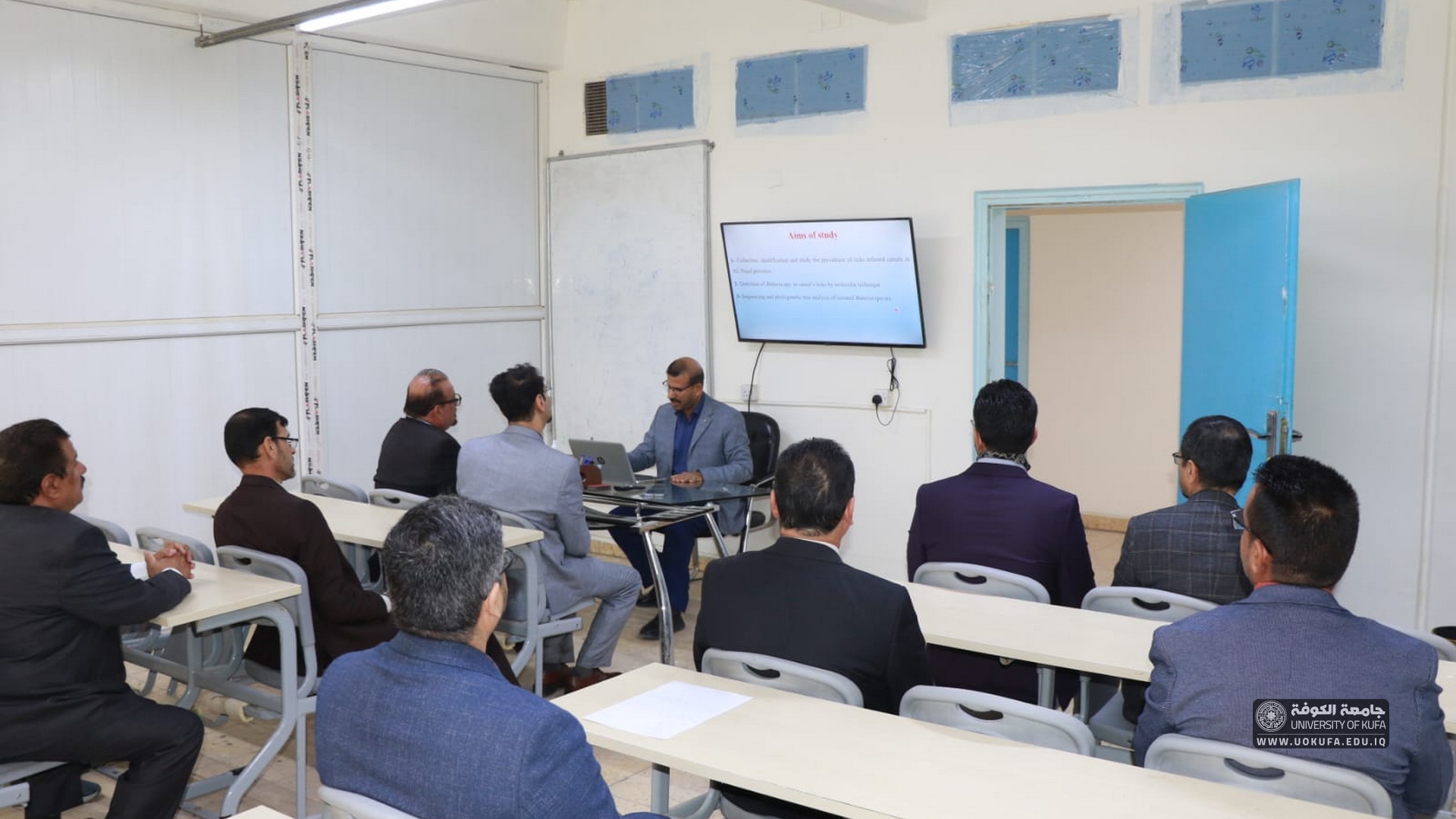The Department of Veterinary Microbiology at the College of Veterinary Medicine held a seminar entitled Molecular detection and genetic analysis of Babesia species that infect camel ticks with one hump in Najaf Al-Ashraf Governorate It was presented by Dr. Maytham Askar Alwan in the postgraduate hall The seminar was attended by the respected dean of the college, Prof. Dr. Karar Muhammad Abdul-Sada, and a number of faculty members from different branches of the college. The seminar aimed to investigate the prevalence of Babesia species in slaughtered one-humped camel ticks in Najaf Al-Ashraf slaughterhouse and determine the prevalence of tick infestation using microscopic and molecular diagnostic methods The study concluded that camel ticks are infected with Babesia bigemina and Babesia bovis, and that the prevalence of Babesia is closely related to the seasonal activity of the vector ticks, where five species of hard ticks that infect camels belonging to the genus Hyalomma and Rhipicephalus were recorded The study also proved that Babesia bigemina isolates from camel ticks are genetically identical to the global isolates from Thailand and Japan, while Babesia bovis isolates are genetically identical to the global isolates from China. Finally, the seminar came out with several recommendations as follows: 1- Conducting a comprehensive epidemiological study of babesiosis and tick infestations in camels in the desert of Najaf Al-Ashraf to determine the extent of the disease. 2- Conducting more studies to detect the common types of Babesia that infect humans (breeders) and animals. 3- Establishing regular programs to control the vector ticks using pesticides, especially during the seasons of tick spread and thus control blood parasites, and conducting awareness activities for farmers and breeders about the risks of ticks as a vector for many diseases shared between humans and animals. 4- The use of polymerase chain reaction techniques to detect blood protozoa in field animals and their vectors are very accurate, specific and sensitive methods.


 Faculty of Veterinary – University of Kufa Official Site – Faculty of Veterinary
Faculty of Veterinary – University of Kufa Official Site – Faculty of Veterinary

